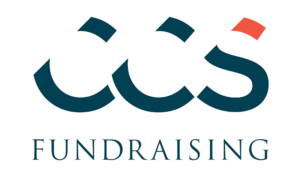From local natural disasters to national market fluctuations, every community experiences unexpected crises. As many organizations (re)start campaigns, parishes and dioceses are developing plans now to stay agile and maintain fundraising momentum during future emergencies.
Previous crises served as valuable context for how best to navigate philanthropic activity. During the 2008 recession, CCS saw that organizations that proceeded with their campaigns and long-term plans found success, out-hustled competition for the philanthropic dollar, and were better positioned to thrive afterward. From a 2007-2009 study of 254 campaigns, the 119 that CCS managed (that started or kept up their efforts during that time) raised $6.7 billion, with 86% exceeding their fundraising goals.
COVID-19 was an unprecedented event with many unknowns, but there are some lessons from the past that hold true in today’s context:
- Organizations who stop fundraising activities altogether get left behind
- Donors and stakeholders understand the circumstances; they are willing to adjust with the organization
- Donors drop causes when they no longer feel connected to the cause or the organization; this emphasizes the need for over-communicating during this time
- This can be an opportunity to strengthen bonds with stakeholders (donors, pastors, parish staff)
Case Study
In 2019, the Catholic Community Foundation of the Diocese of Cleveland, Ohio embarked on an 18-month, $30 million campaign effort designed to support capital projects and an endowment. The campaign was off to a strong start with $13.7 million committed by the time churches closed in early March 2020. It was clear that without adaptation and flexibility, the campaign could not continue. Three key questions emerged in the early days of the pandemic:
- In what ways should the campaign model shift to address parish needs?
- What are the key considerations around a modified campaign timeline?
- What assistance is needed for parishes to be sustained financially?
Keeping the lessons of previous crises top of mind, the Catholic Community Foundation chose to focus on what they knew they could control in the weeks ahead:
- Increase communication with key audiences: donors, campaign leaders, and parishes
- Plan a series of steady communications with each stakeholder group over the next several weeks
- Develop an action plan that addresses local needs and reinforces the needs of the campaign
- Display empathy and concern for donors and the most vulnerable members of the community
These tenets shaped what came to be known as the SECURE program, which was a partnership between the Diocese, CCS Fundraising, and each parish in the Diocese of Cleveland to assist with connecting parishioners with their parish during and beyond COVID-19, as well as opening channels for virtual and alternative offertory giving. The SECURE program is a focused effort to provide real-time support in parallel with other Diocesan recovery efforts taking place at the time, including a Universal Offertory Program, a COVID-19 Emergency Fund, and Increased Offertory Programs offered through the Diocese.
SECURE stands for: Support from the Foundation and CCS; Evaluation and triage of parish offertory and capabilities; Connection to parishioners; Utilize Resources, and Engage the parish community.
The goals of the SECURE program were three-fold:
- Rapidly connect the Foundation staff to Pastors to better understand parish needs
- Develop customized plans for each parish to recover lost offertory as a result of COVID-19
- Build a stronger system of online and communication tools to sustain parishes over the long term
In lieu of local parish campaigns, the SECURE program ran for approximately 10 weeks in parallel to an ongoing major gift effort. Of the 50 reporting parishes, weekly offertory from March 8 (pre-crisis) to May 31 (churches re-opening in Ohio) was, on average, eight percent higher than pre-crisis levels and over two times higher than the all-time offertory low on March 22. Parish offertory for the first three weeks in June exceeded the first three weeks in March by approximately 45 percent. Most notably, the Catholic Diocese of Cleveland has been able to stave off more significant offertory losses in Fiscal Year 2021.
Aside from the financial benefits of the program participants, the pivot to a modified campaign model allowed the Foundation to restart the campaign in Fall 2020 with a cohort of parishes who had a positive financial outlook, stronger technical capability, and a sense of earned trust in the Foundation to remain flexible and responsive to parish needs. The return to parish campaigning post-SECURE program has resulted in more dollars raised and more donors engaged than was previously expected.
Lessons Learned
The remainder of this article will share some specific tips and lessons learned that may be helpful if your organization is considering emergency planning as you (re)start or reconfigure your fundraising efforts:
Embrace Change: A shift in your planning does not mean a break in your fundraising efforts. Embrace learning and adaptation in your campaign model in order to remain responsive to an ever-changing post-pandemic environment.
Build Trust: Explore ways your organization can best support parishes as they navigate a hybrid model of in-person and virtual worship, even if it runs parallel to or in support of your larger fundraising efforts.
Maintain Major Gifts: Continue to engage your major donors meaningfully during this time to ensure they remain closely connected to the work and the mission of your organization.
Bolster Resources: Investigate where and how your organization can strengthen its tools and resources for a post-pandemic environment.
Communicate Success: Maintain consistent communications with your constituents and celebrate the small wins.
CCS offers our congratulations to the Catholic Community Foundation of the Diocese of Cleveland. To date, the campaign has raised $49 million from 11,900 donors—far above the $30 million campaign goal.
Interested in learning more about how CCS works with parishes and dioceses? Contact us today.
